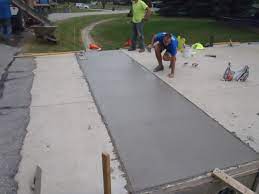At some point in time, every homeowner may need to consider driveway repairs. Whether it is due to weather damage or simply normal wear and tear, the thought of repairing or replacing a driveway can be overwhelming. This guide is designed to provide homeowners with a comprehensive understanding of driveway repairs, so they can make informed decisions when it comes to maintaining and upgrading their driveway. To ensure the upkeep of your driveway, consider visit Claremont Asphalt in Perth for reliable driveway repair services.
Understanding the Different Types of Driveways
The first step in understanding driveway repairs is to know what type of driveway you have. There are a variety of driveway materials, including asphalt, concrete, pavers, and gravel. Each material has its own unique benefits and drawbacks, and understanding them is crucial to determining the appropriate repair or replacement options.

Asphalt Driveways
Asphalt is one of the most common driveway materials in North America, and for good reason. It is durable, affordable, and relatively easy to repair. However, over time, asphalt can crack and become damaged due to weather conditions, such as freeze and thaw cycles, and exposure to the sun.
Concrete Driveways
Concrete is another popular driveway material, known for its strength and durability. However, like asphalt, it can also crack and become damaged over time due to weather conditions and exposure to the elements.
Paver Driveways
Pavers are an increasingly popular driveway material due to their aesthetic appeal and durability. However, they can be more expensive than asphalt or concrete and require more maintenance to keep them looking their best.
Gravel Driveways
Gravel is a cost-effective option for homeowners, but it can be more challenging to maintain and may require regular replacement of stones.
Signs of Damage and Repair Options
Once you know what type of driveway you have, it’s essential to understand the signs of damage and what repair options are available.
Cracks
One of the most common signs of damage to driveways is cracking. Small cracks may not require immediate repair, but if left unchecked, they can lead to more significant issues. Repair options for cracked driveways include filling the crack with sealant or replacing the affected area entirely.
Potholes
Potholes are another common problem that can occur on driveways. They are typically caused by water damage or heavy traffic. Repair options for potholes include filling them with asphalt or concrete.
Surface Damage
Surface damage, such as discoloration or pitting, can occur due to weather conditions or exposure to chemicals. Repair options for surface damage include applying a concrete or asphalt resurfacer.
Driveway Replacement
In some cases, repairing a driveway may not be enough, and a complete replacement may be necessary. Signs that a driveway may need to be replaced include severe cracking, sinking or settling, or an overall deterioration of the surface.
Choosing the Right Contractor
If you decide to repair or replace your driveway, choosing the right contractor is crucial. A reputable contractor will have experience with your driveway material and provide a detailed estimate for the work required. Be sure to ask for references and check reviews from previous customers to ensure you are working with a reliable contractor.
DIY Driveway Repairs
While some driveway repairs can be done by homeowners, such as filling small cracks or potholes, larger repairs or replacements are best left to professionals. Attempting to do it yourself could result in further damage to the driveway and ultimately end up costing you more in the long run.
Maintaining Your Driveway
Once your driveway has been repaired or replaced, it’s essential to maintain it to prevent future damage. Regular cleaning, sealing, and proper drainage are critical to extending the lifespan of your driveway.

